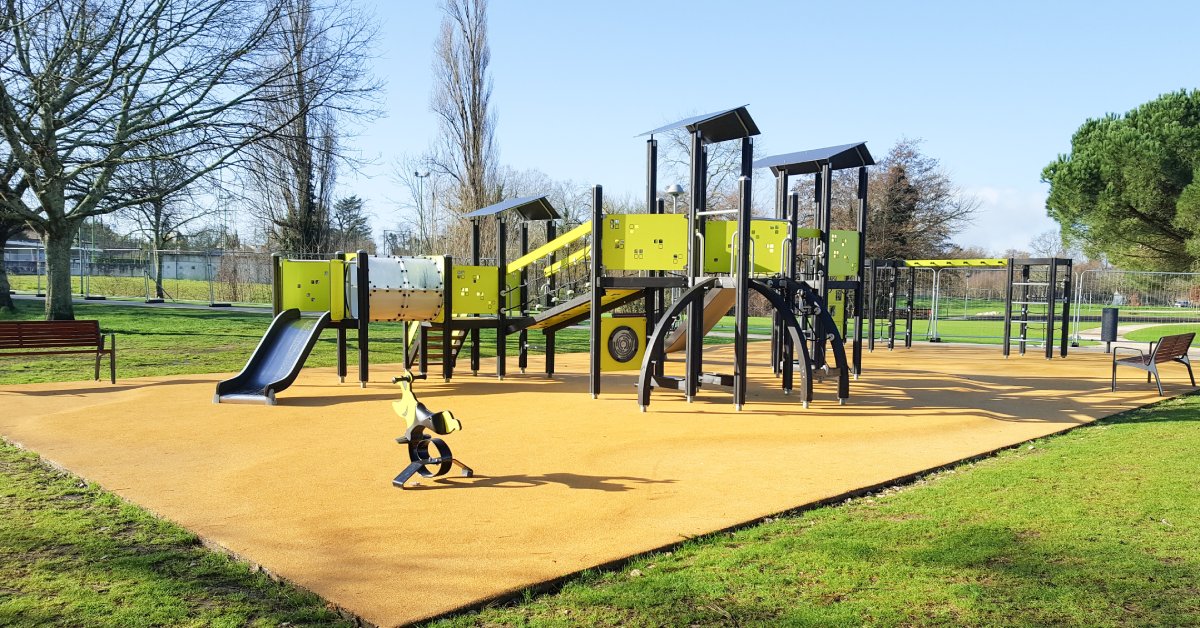Safety Features All Playgrounds Should Have

Creating safe playgrounds is about ensuring each play zone encourages fun with minimal risk. Sounds difficult, right? No, it’s actually relatively simple. Focusing on safety features is vital for fostering stimulating yet secure play environments. Here, we’re going into greater detail about what safety features all playgrounds should have and why they’re so important.
Quality Over Quantity
Playground safety begins with thoughtful design. Overcrowding a playground with numerous features or equipment often compromises the safety and usability of the whole space. Instead, prioritizing quality over quantity ensures that each piece of equipment serves a purpose and meets safety standards.
Features, such as proper spacing between play areas, sturdy materials, and clear traffic flow routes, play crucial roles. For instance, dedicating separate zones for toddlers and older children reduces the risk of collisions and injuries. High-quality playground layouts encourage independent exploration and make the experience safer for everyone while keeping design intuitive for parents or supervising adults.
The Flooring Foundation
A playground’s ground surface plays just as vital a role in safety as the equipment itself. Falls are one of the leading causes of injuries in playgrounds, but well-chosen flooring can significantly reduce the impact. It’s essential to choose the right thickness of poured rubber flooring to cushion falls and avoid critical injuries. Rubber flooring offers excellent impact absorption and provides a durable and slip-resistant surface.
Unlike sand or mulch, which can scatter or degrade over time, rubber surfacing remains consistent and requires minimal upkeep. Proper flooring ensures that children can play freely with a reduced risk of scraped knees or more severe impact injuries.
Safe and Fun Equipment
Every playground needs to strike a balance between entertainment and safety. Outfitting a playground with safe and fun equipment enhances a child’s experiences while also ensuring their well-being. Equipment should include rounded edges, non-toxic materials, and grips that prevent slips. Age-appropriate slides, climbers, and swings should be thoughtfully chosen to cater to children of different developmental stages.
For example, swings with safety harnesses for younger children or slides with controlled slopes can prevent accidents while remaining enjoyable. Keeping safety a central focus in equipment selection guarantees that fun and functionality go hand in hand.
The Role of Proper Maintenance
Design and materials mean little if not supported by proper maintenance. Regular inspections are nonnegotiable for identifying wear and tear, loose bolts, or damaged parts before they lead to accidents. Maintenance checks also make sure the flooring remains intact and drainage systems are functioning properly to avoid standing water on slippery surfaces.
Playground professionals should establish routine schedules and document inspections to stay proactive about potential risks. Maintenance keeps a playground safe, visually appealing, and operationally effective for years.
From flooring that absorbs impact to equipment with child-friendly features, every element of a playground contributes to the safety and enjoyment of its young users. When urban planners, school administrators, and designers prioritize thoughtful layouts, regular maintenance, and community cooperation, the result is haven for exploration and growth. Take a step forward in creating safer playgrounds today by embedding these features into every design choice.



3 Comments
gloria patterson
A lot of good information here to think about.
The one thing I think about is HOW DID WE SURVIVE ON PLAYGOUNDS WITHOUT ALL OF THIS??
heather
Great post for parents to read. It is so scary how hot those slides can get during the summer months.
Terri Quick
Yes these are very important